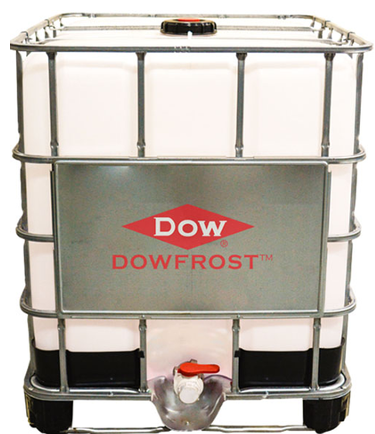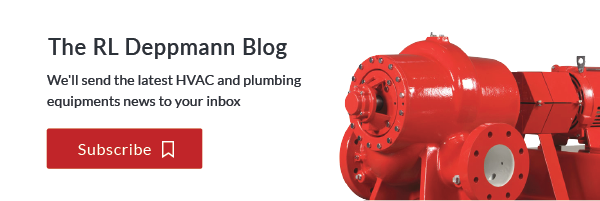There are three glycol corrections when designing a hydronic or process cooling system; heat transfer correction, pressure drop correction, and pump curve correction. This R L Deppmann Monday Morning Minute examines the second of three glycol corrections. We often get the question, “I have selected my piping friction loss based on water, but I am pumping a glycol solution. What correction do I use? “
When determining the pressure drop in a closed hydronic system, using water, the engineer normally takes the sum of pressure drops of equipment, farthest control valve, piping, valves, fittings, and adds a healthy safety factor. When the fluid is a glycol heat transfer solution this process could change slightly. Some of the pressure drops may be based on the glycol fluid and some may be based on water. The equipment may or may not be selected for the glycol solution. Often the piping friction loss is calculated using the B&G system syzer® or other tables based on 60°F water. What correction factor do we use for the glycol solution?
Glycol Pressure Drop Correction Factors
The problem with correction factors is that they not only change with the fluid and the temperature, but they also change based on velocity.
For example, use the Bell & Gossett electronic System Syzer® and compare pressure drop for 50% E.G., at 40°F to 50⁰F compared with the normal default of water at 60°F for various flow rates in 2-1/2” copper pipe. The results are as follows:
| Flow Rate (GPM) | 35 | 50 | 75 | 100 |
| Glycol Pressure drop per feet/100′ | 1.42 | 2.64 | 5.36 | 8.89 |
| Water Pressure drop per feet/100′ | 0.94 | 1.77 | 3.65 | 6.12 |
| Correction Factor (Glycol PD/Water PD) | 1.51 | 1.49 | 1.46 | 1.45 |
We are often asked about the correction for propylene-based fluids such at Dowfrost or ethylene glycol such as Dowtherm SR-1 at different percentages and different temperatures.
It would be a large time commitment to calculate the exact pressure drop in every branch, since the correction factor changes with the velocity. It also may not make enough of a difference to be of value. If we must settle on a single correction, I suggest you use the correction at about two feet per 100 feet of pipe. This is about the center of the “pie” in scale 2 of the System Syzer. Some flows will be higher and some lower but the suggestion above is a good middle ground in commercial and industrial systems.
Next week the R. L. Deppmann Monday Morning Minutes will feature a table showing various correction factors for various percentages of propylene base fluids, such at Dowfrost or ethylene glycol based Dowtherm SR-1 at different temperatures.


